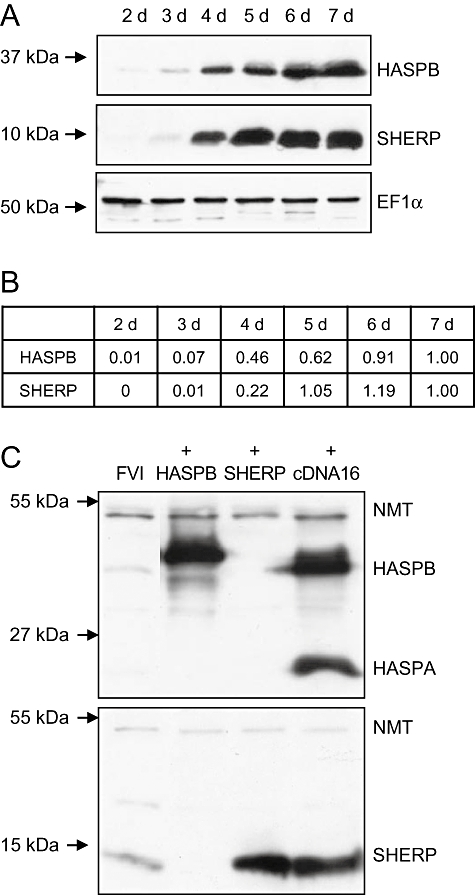Fig. 1.

A. Expression of HASPB and SHERP during growth of L. major in culture. Immunoblot analysis of early passage wild-type parasites sampled over 7 days in culture. Whole-cell lysates (1 × 106 parasites per track) were separated by SDS-PAGE and the gels immunoblotted with polyclonal antisera against HASPB (10% gel) or SHERP (15% gel). Probing with anti-EF1α (15% gel shown here) was used as an additional loading control.B. Densitometric analysis of HASPB/SHERP bands in (A) normalized to parasite numbers; values shown for each protein are relative to day 7.C. Expression of HASPB and SHERP complemented L. major after 3 days in culture. Samples were prepared as in (A) and the immunoblots (taken from 10% gels) probed with anti-HASPB (upper blot), anti-SHERP (lower blot) and anti-NMT (as a loading control for both blots). FVI, wild-type parasites; +HASPB, LmcDNA16 null complemented with pTEX HASPB; +SHERP, LmcDNA16 null complemented with pTEX SHERP; +cDNA16, LmcDNA16 null complemented with pTEX LmcDNA16 (all mutants are described in McKean et al., 2001). Molecular masses are indicated on the left of the blots.
